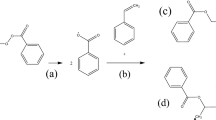Abstract
Hydrogen peroxide is a very versatile oxidizing agent, and it is also environmentally compatible considering that the products of its exothermic decomposition are oxygen and water.When kept in a clean temperature-controlled environment, the self-reaction (decomposition) rate is extremely low. However, it is well known that even a small amount of contamination will dramatically increase the reaction rate. This paper describes the use of the fast thermal activity interpreter (FTAI) instrument to examine the chemical reactivity of commercially available 50% hydrogen peroxide at two different temperatures (30 and 40°C) both with and without contamination. The results show that at 30°C a small amount of rust (330 ppm) increases the reaction rate of 50% hydrogen peroxide by a factor of 50. When the temperature is increased to 40°C, the reaction rate is further increased by almost a factor of four. The implication for reactivity management is that at this contamination level most practical vessel sizes would require emergency venting capability.
An evaluation was then performed to determine the emergency venting requirement for the safe transportation or storage of the contaminated hydrogen peroxide. It was determined that for quantities of the material less than 5 gallons, conventional breather vents would be sufficient to accommodate the gas evolved. However, for larger quantities, a safety relief device would be needed. For example, for a 400-gallon tote bin at 40°C the required minimum vent area is estimated to be 4.3 in2, corresponding to a minimum vent diameter of 2.3 inches.
Similar content being viewed by others
References
Hydrogen Peroxide, FMC Corporation, 14 July 2005. http://www.fmcchemicals.com/Industrial/V2/ProductFamily/0,1874,1087,00.html.
H. K. Fauske, A Fast Thermal Activity Interpreter for Controlling Chemical Reaction Hazards, Process Safety Progress, Vol. 23, No. 2, June 2004, United States Patent pending. http://www.Fauske.com
J. P. Burelbach and A. E. Theis, Thermal Hazards Evaluation Using the ARSST, DIERS/CCPS, October 2005. http://www.Fauske.com
H. K. Fauske, Properly Size Vents for Nonreactive and Reactive Chemicals, Chemical Engineering Progress, February 2000. http://www.Fauske.com
H. K. Fauske, Managing Chemical Reactivity – Minimum Best Practice, DIERS/CCPS, October 2005. http://www.Fauske.com
Fauske & Associates, LLC, Reactivity Management Software (RMS), Version 2.0, FAI/04-19. http://www.Fauske.com
Author information
Authors and Affiliations
Corresponding author
Rights and permissions
About this article
Cite this article
Raines, J.C., Schmidt, J.P., Burelbach, J.P. et al. Assessing contaminated hydrogen peroxide for safe storage and transportation using the FTAI. J Therm Anal Calorim 85, 53–55 (2006). https://doi.org/10.1007/s10973-005-7343-y
Received:
Accepted:
Published:
Issue Date:
DOI: https://doi.org/10.1007/s10973-005-7343-y




